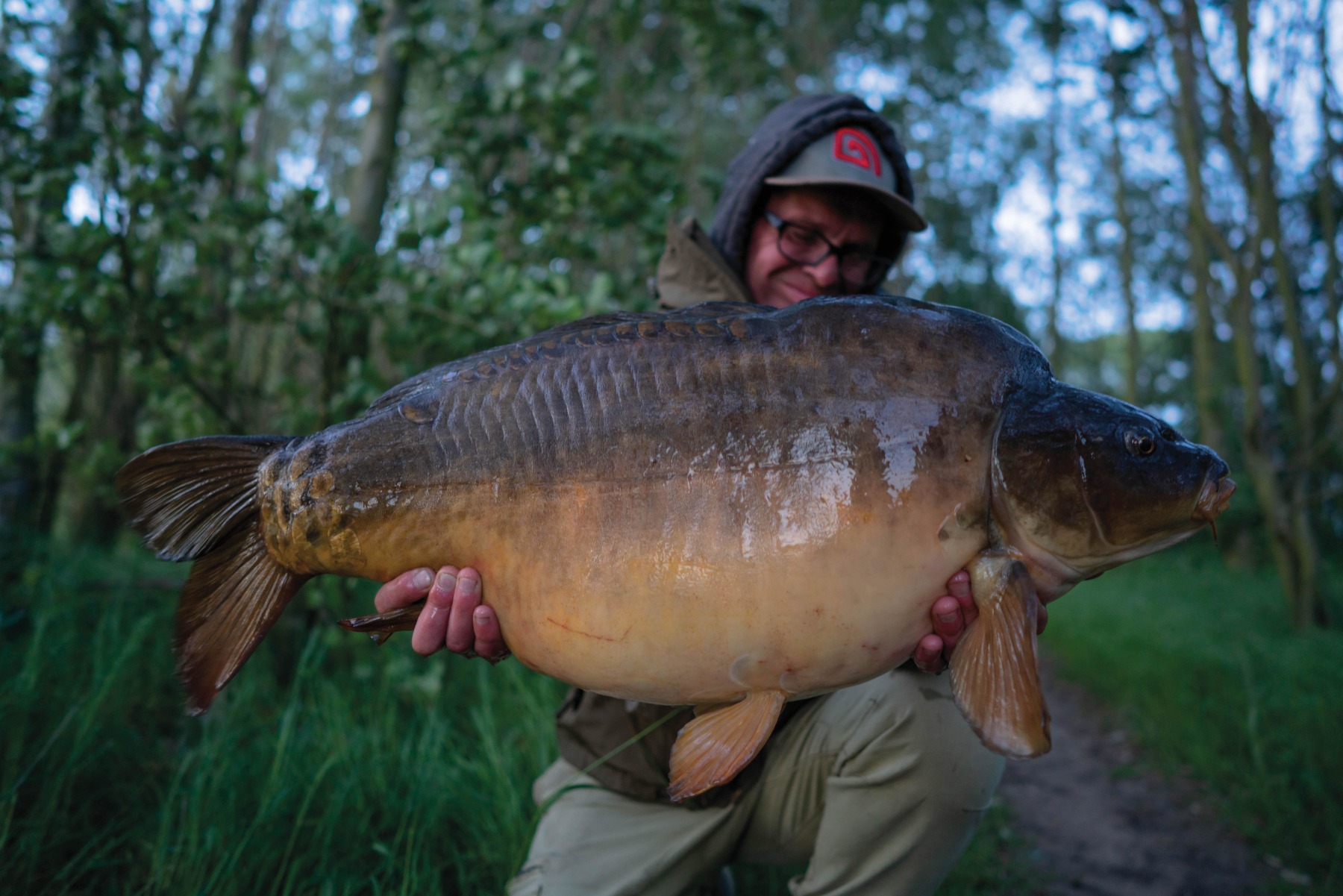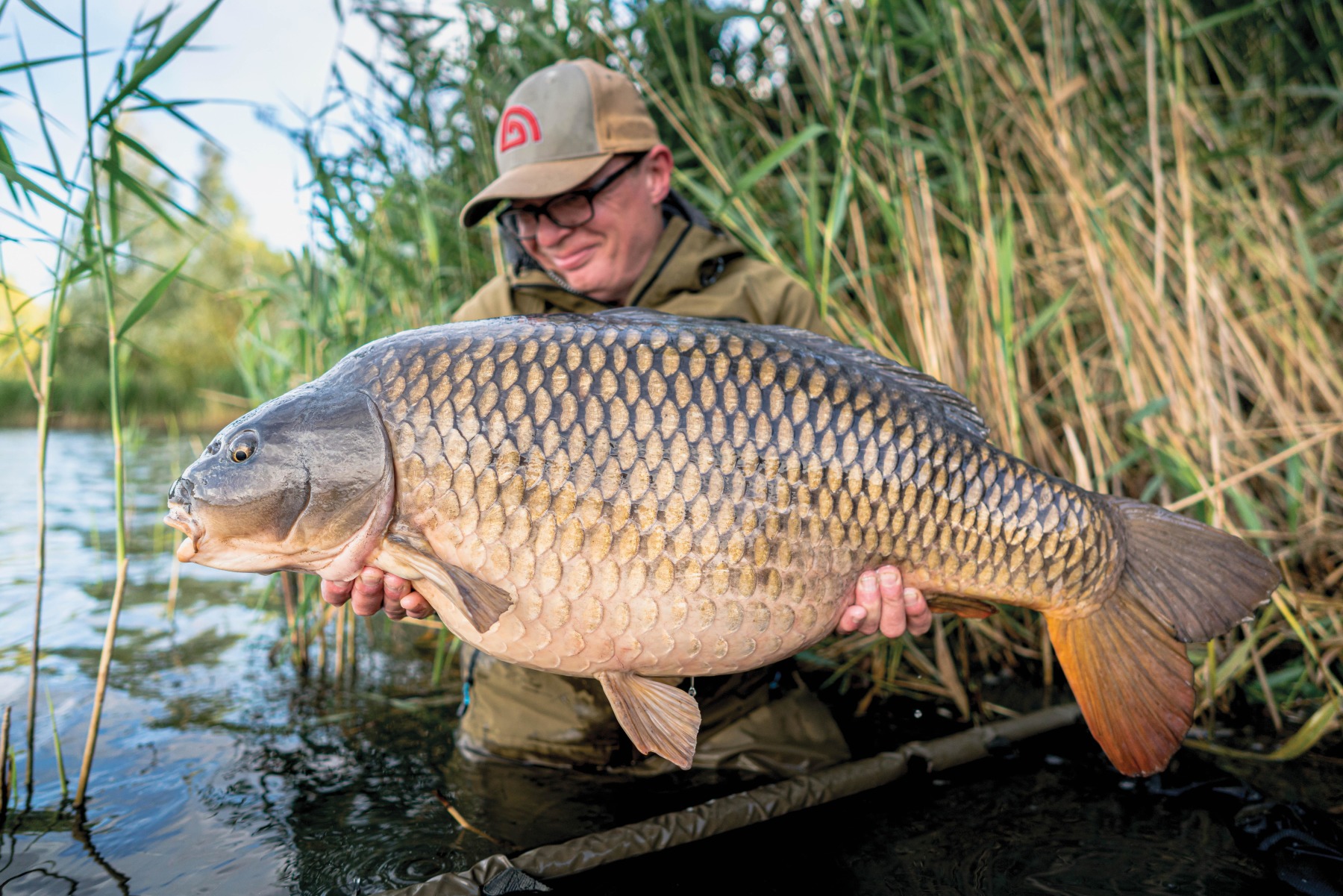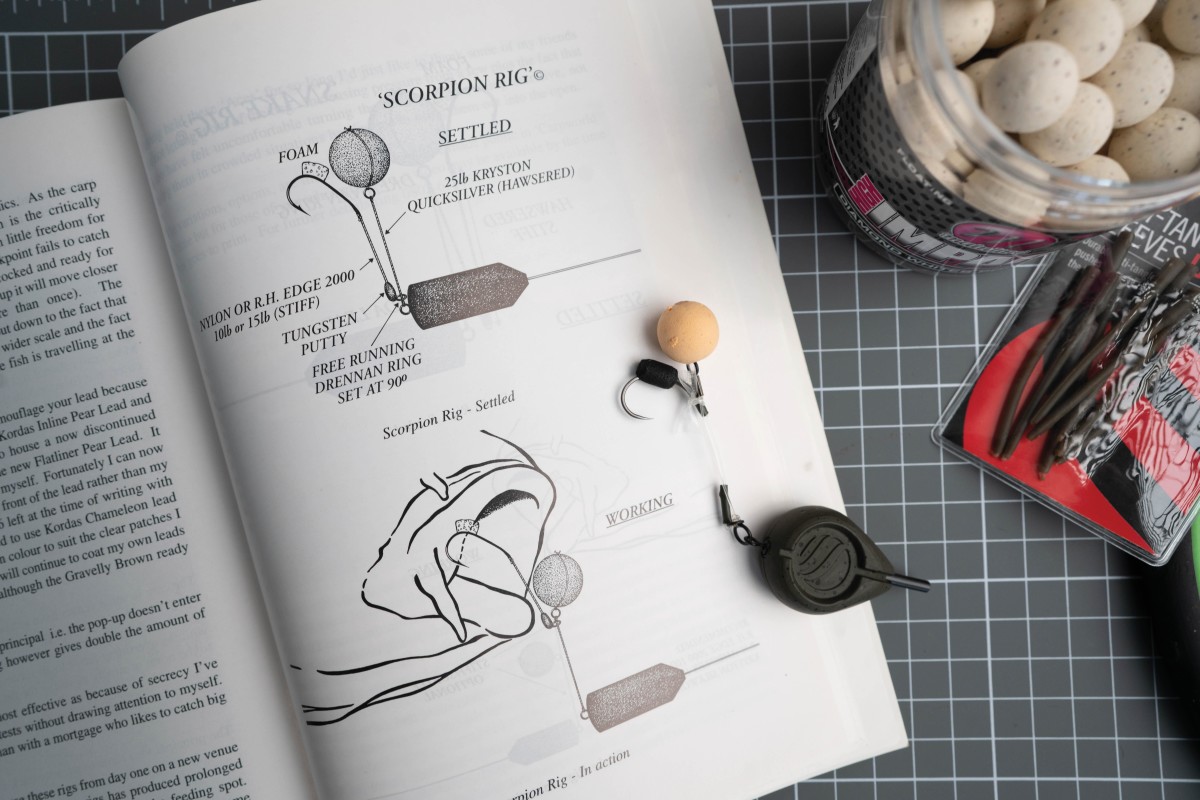
The Scorpion King!
Forget the rose-tinted glasses, it’s time to adapt, and perhaps overcome, as Jon ‘Shoes’ Jones considers a potentially very effective rig from days gone by...
Looking back through some of my books on carp rigs, I came across a few set-ups which haven’t moved on since their introduction many years ago. If difficult to tie, it seems that the longevity of a rig diminishes quite quickly. Unfortunately for some of these rigs, even if successful, they’ll not light the fires of many anglers like some of the most popular versions around now. If, then, you’re about to come up with a super-special rig that is going to catch loads of carp, make sure it’s simple to tie.
One monthly magazine feature which got me excited back in the late eighties and nineties was one written by Martin Clarke, and it detailed his adventures on some of the country’s hardest lakes. His development of rigs was similar to that of Frank Warwick, in that he would come up with one to catch carp on a particular lake he was fishing. These may not have worked on all waters, but they were effective on ‘their’ venue, having been devised to outwit the fish after many hours of observation there.
Some rigs which have evolved over time, work wherever you take them—the Ronnie Rig, Stiff Hinge, Chod, and I would be shouted down if I didn’t mention the humble Hair Rig—but some work only in specific circumstances or environments. Let’s look at one of the rigs the Martin developed…
The Scorpion Rig
At this point, I would like to quote a few paragraphs from Martin Clarke’s feature in Korda Developments’ Advanced Rig Book, published many years ago. The text gives a better understanding of what Martin’s thoughts are on this rig, and why he set about creating it.
‘Most conventional rigs used today are only effective if, at the moment the hook enters the fish’s mouth, the hooklink tightens up in a split second, bringing the hook point and semi-fixed lead into play. For this to happen every time, the fish must move in a favourable direction, away from the lead with the hook inside its mouth, as moving towards the lead, it will highly likely end up with the rig being sussed and ejected.
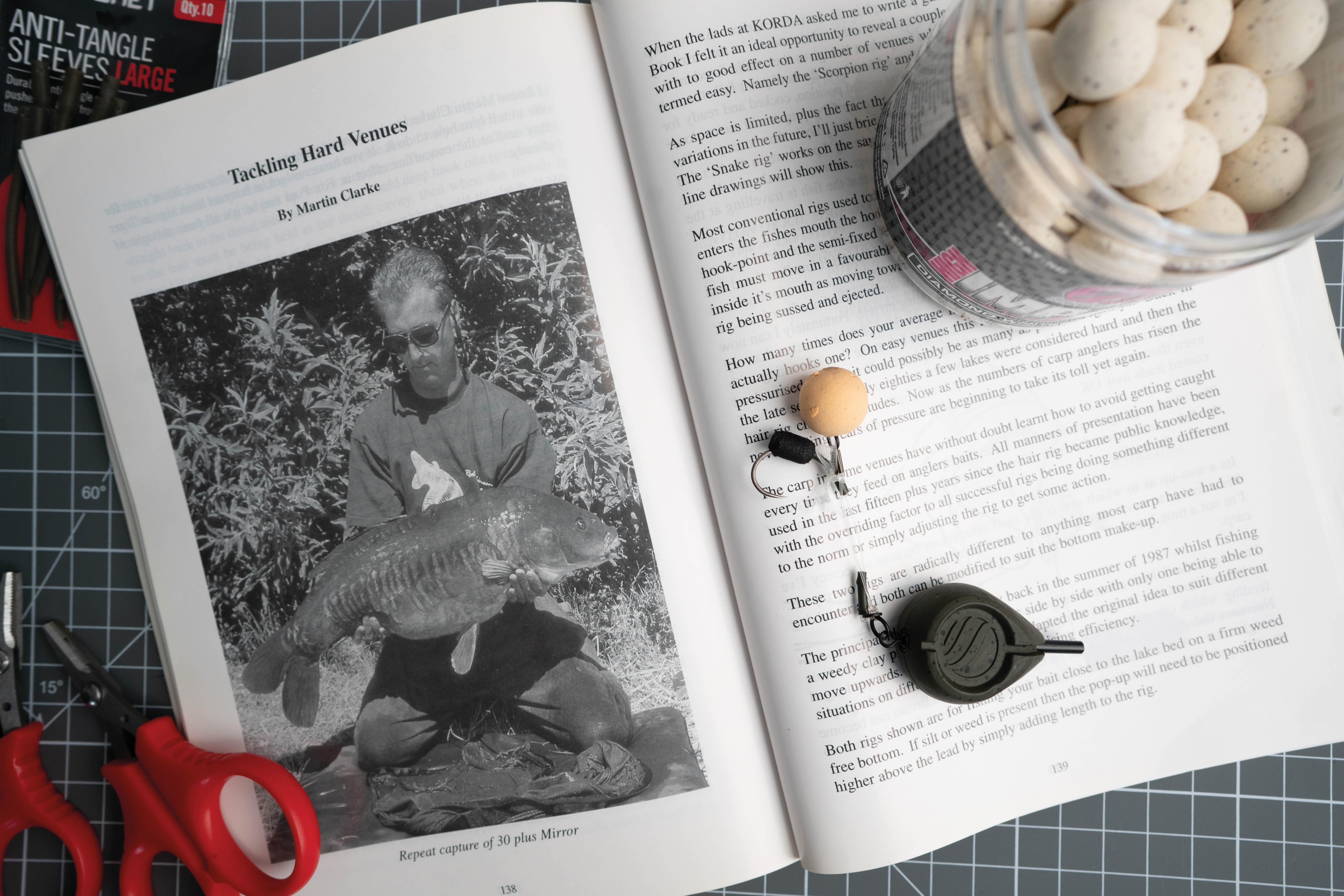
How many times does your average hooklink enter a carp’s mouth before it actually hooks one? On easy venues, this figure may be negligible; on a few pressured venues, it could possibly be as many as in pre-Hair Rig days. Back in the late seventies and early eighties, a few lakes were considered hard, and then the Hair Rig changed attitudes. Now, as the number of carp anglers has risen, the never-ending years of pressure are beginning to take their toll yet again.
The carp in some venues have, without doubt, learnt how to avoid getting caught every time they feed on anglers’ baits. All manner of presentations have been used in the last fifteen-plus years since use of the Hair Rig became public knowledge, with the overriding factors with all successful rigs being that they are something different to the norm, or after simple adjustments, they bring some action.’
The above paragraphs got me thinking. The passage was written in the late nineties, so twenty-five to twenty-six years ago! What stands out to me, is that carp are still ejecting rigs, as we see in footage filmed underwater today. So nothing about carp has changed. The rigs, though, have moved on and become more effective… or have they?
Martin mentions that conventional rigs must allow the fish to move slightly for the hook to take hold, and this is still true today. Super-sharp hooks bring better results, but the true fact is that a carp needs to move before anything can happen.
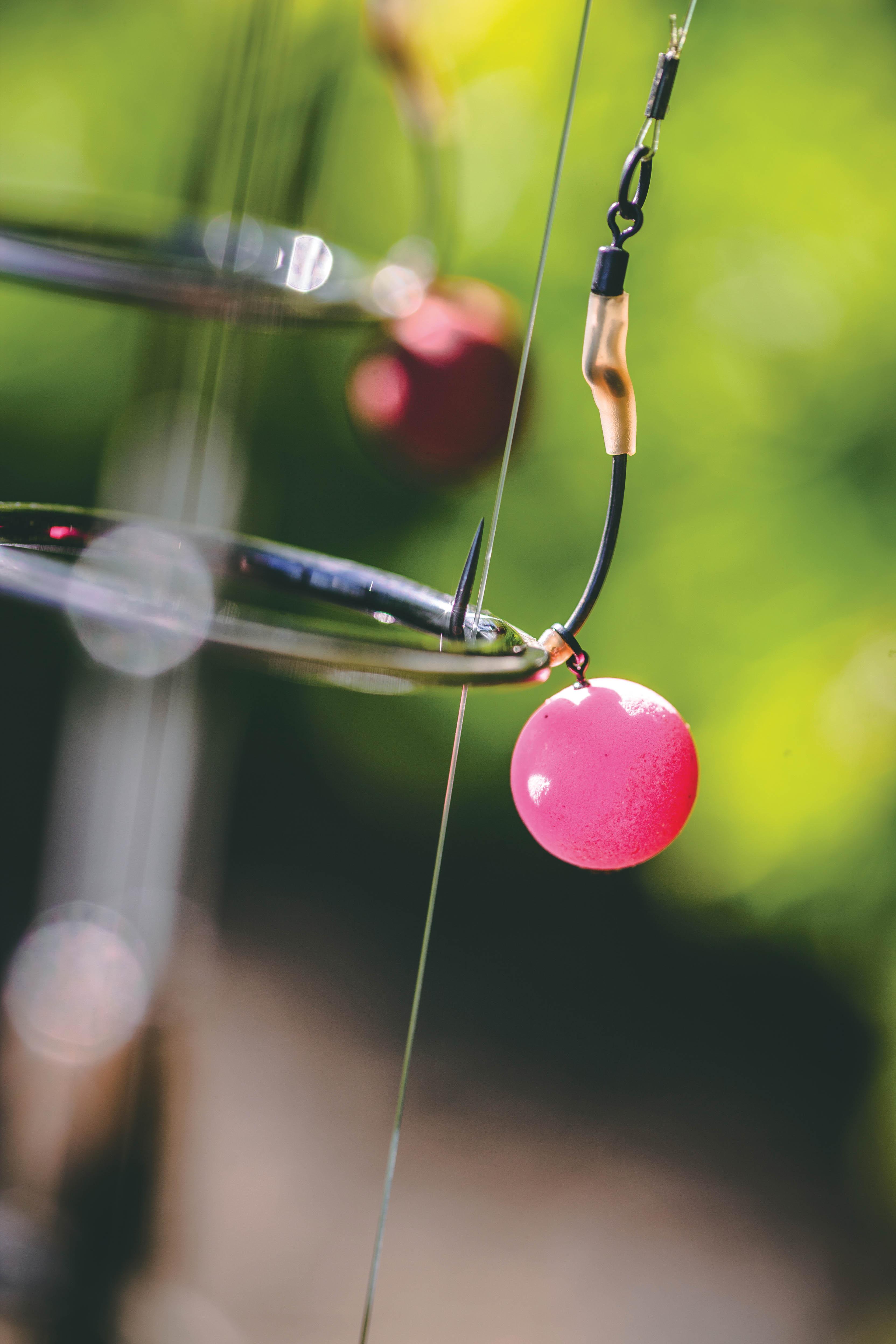
With the Scorpion Rig, the carp doesn’t need to move off. It merely has to suck at the pop-up, but the only thing to enter its mouth is the balanced hook. Now, you might laugh at this rig, and yes, it certainly doesn’t look right before you cast it out. It’s also one for clear-water margins as you need to check it to make sure it’s set correctly—I should know, as I did try it many years back. What I’m trying to say, though, is that certain rigs will work, on certain waters from time to time. If you have the inclination to develop one which suits your lake, then all credit to you. This is just an example of a rig developed by Martin in an effort to overcome the common issues encountered with, shall we say, standard rigs.
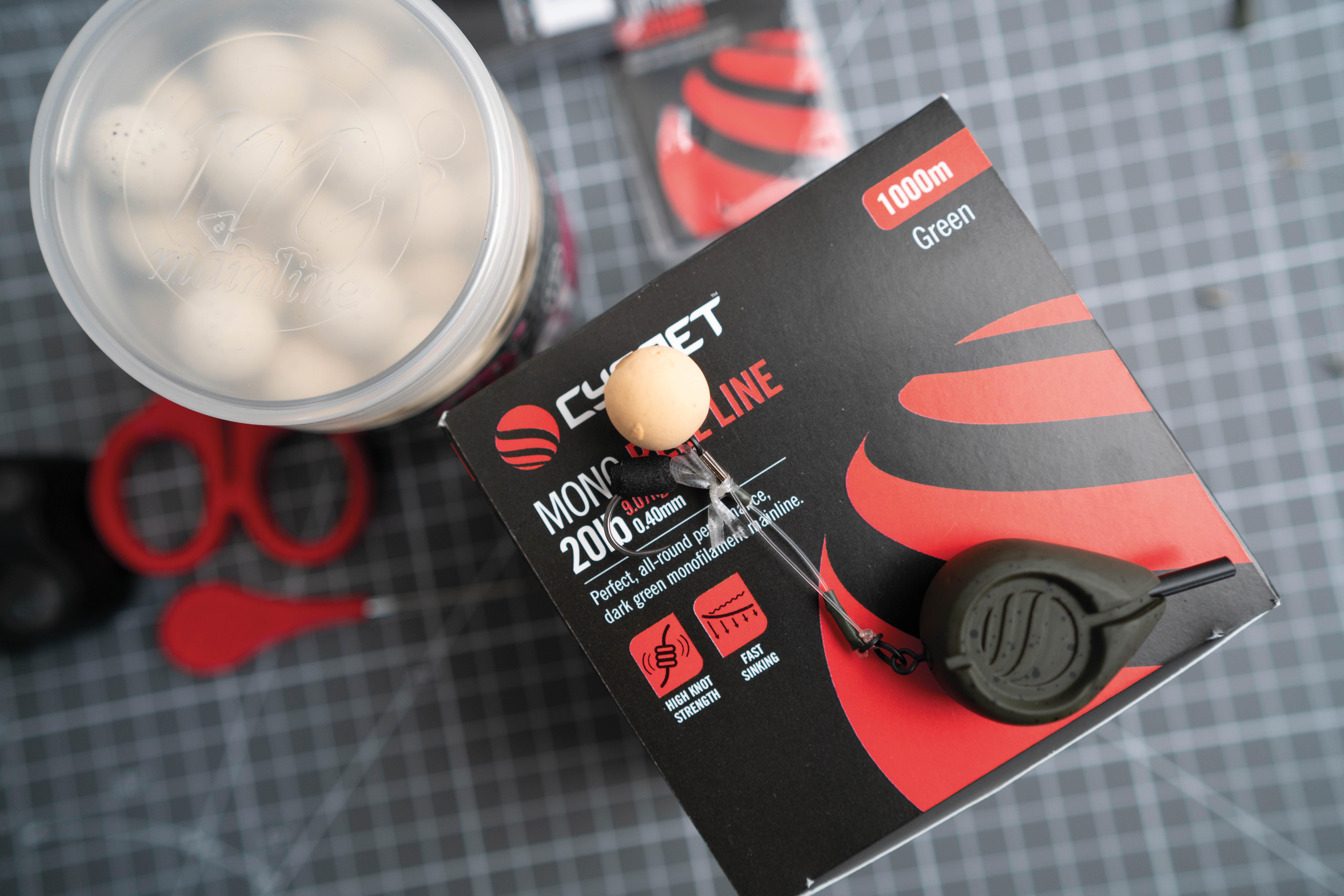
Another point to note with this rig, is that it resets itself after inspection by a carp. The bait is fixed, so it will stay in the popped-up position until the bait loses its buoyancy. The hook, however, is critically balanced, so when the bait is sucked up and ejected, the hook will fall back down slowly into a position of readiness again, as with the Stiff Rigs used today, but with the added benefit of the hook coming straight from a heavy, inline lead, rather than from a clip or helicopter-type set-up.
Having tied the rig again (see images), I appreciate that it is fiddly and looks like a dog’s leg if you don’t PVA the two halves together before you drop it in the margins. It is, however, something to think about. Like Martin said, carp have to move to get the hook to prick or take hold, so a little thought from some of you clever thinkers out there could see you tie a new Scorpion Rig very soon.
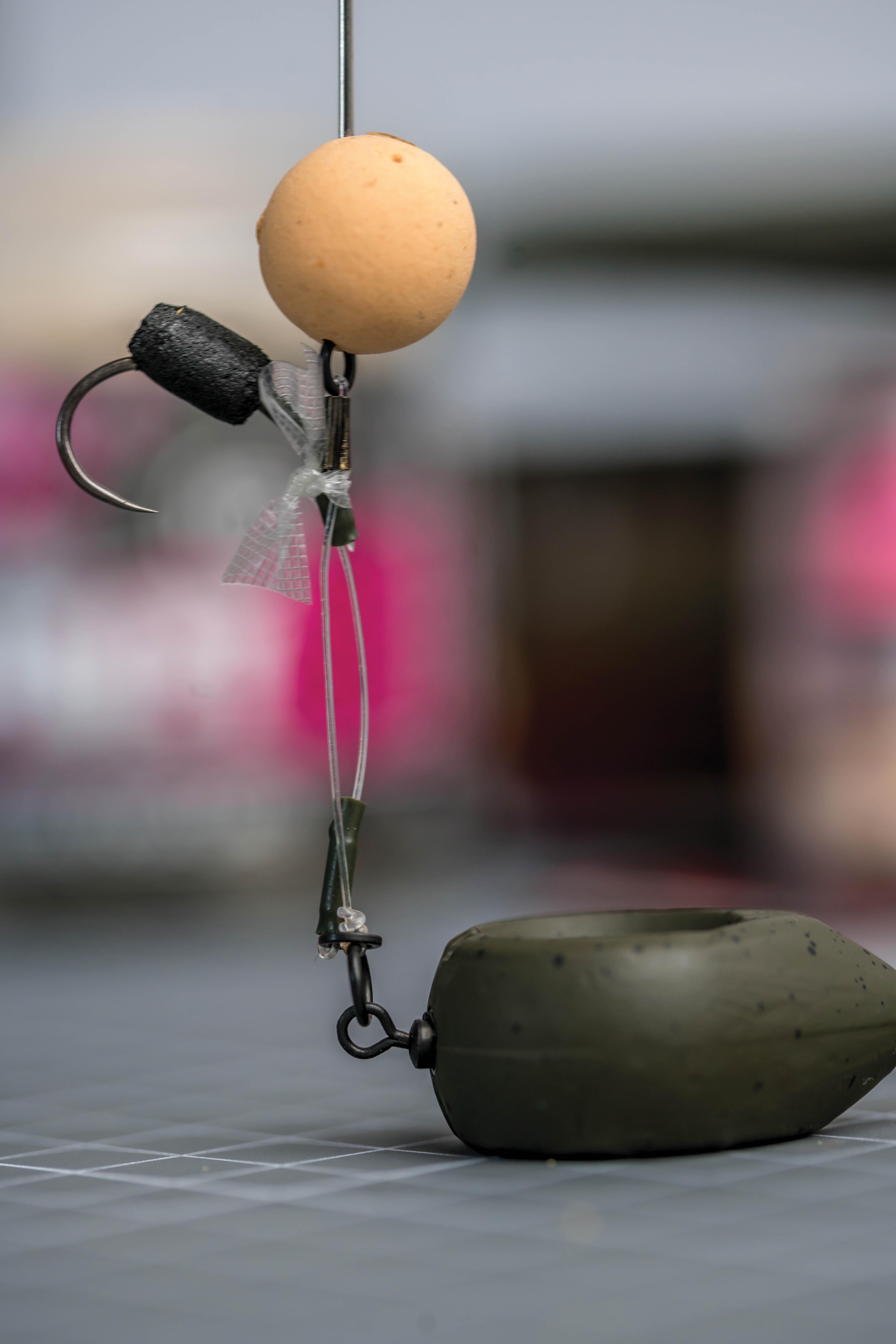
Looking back, there certainly are benefits in using rigs like this one, but I’ll go back to what I said at the start of this feature: if you intend to develop a rig, make sure it can be tied easily.
Until next time…
